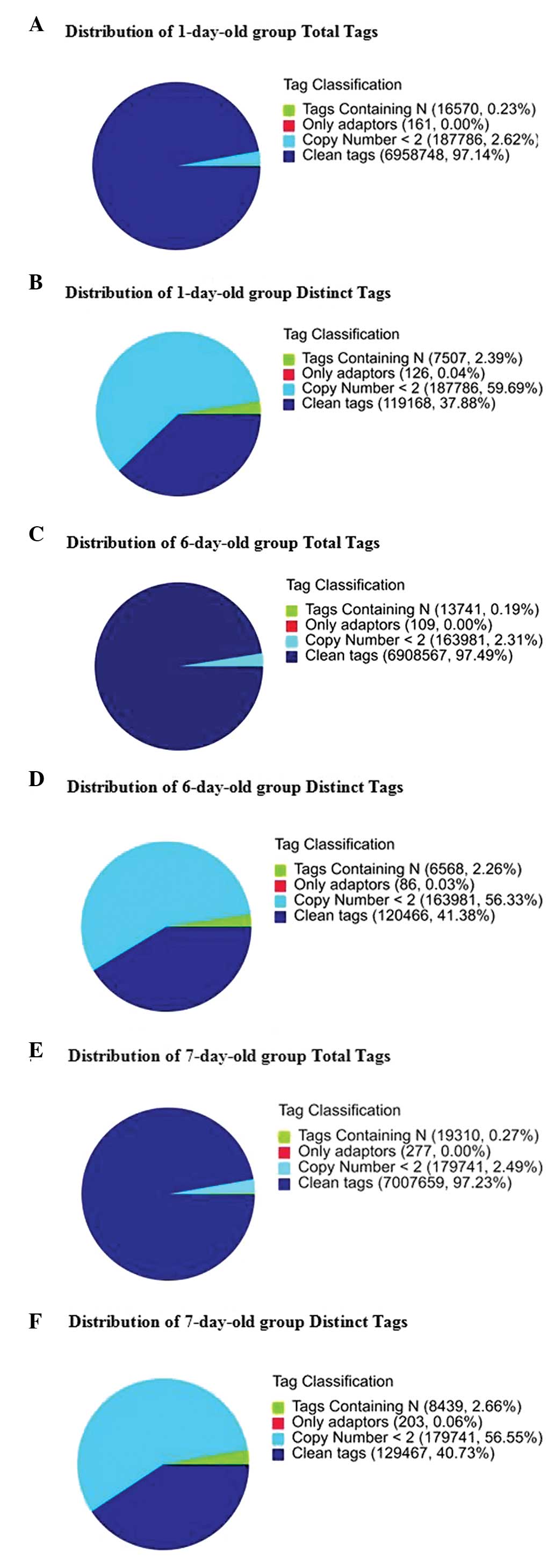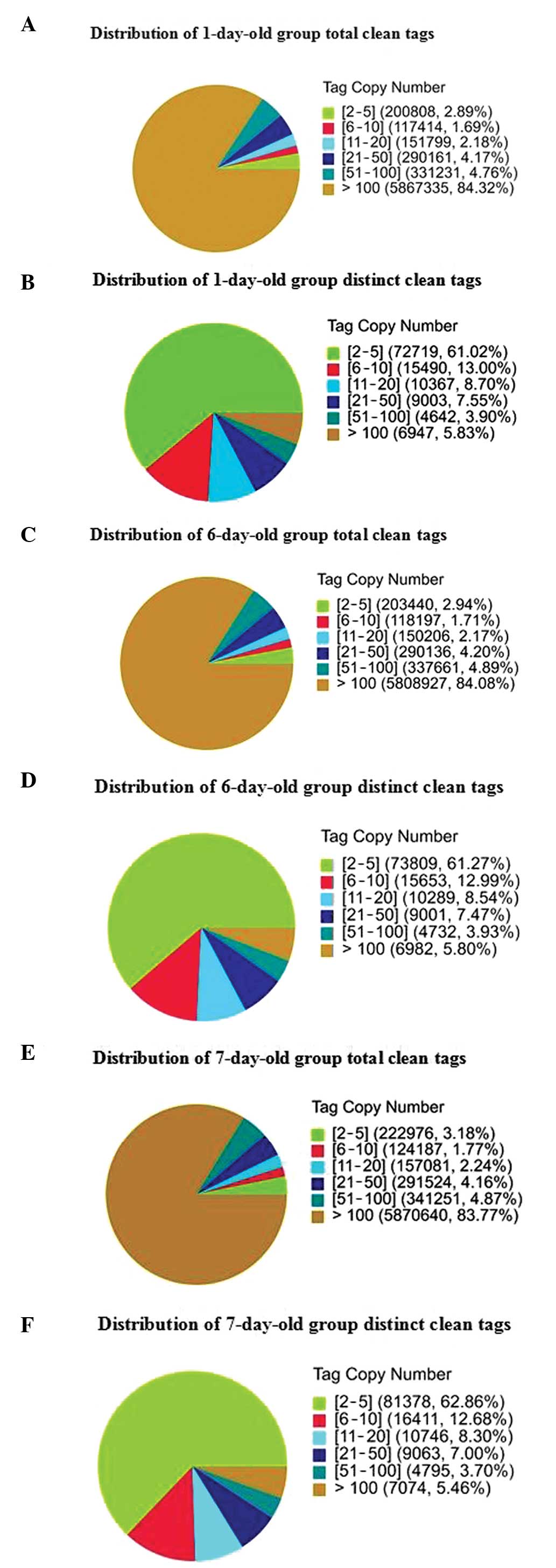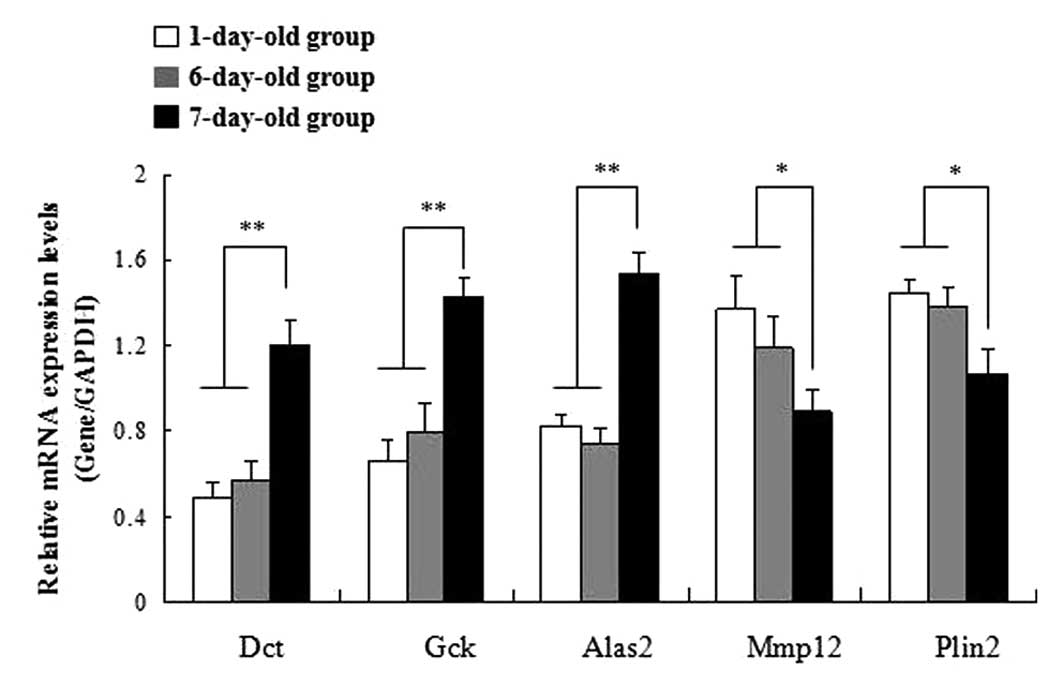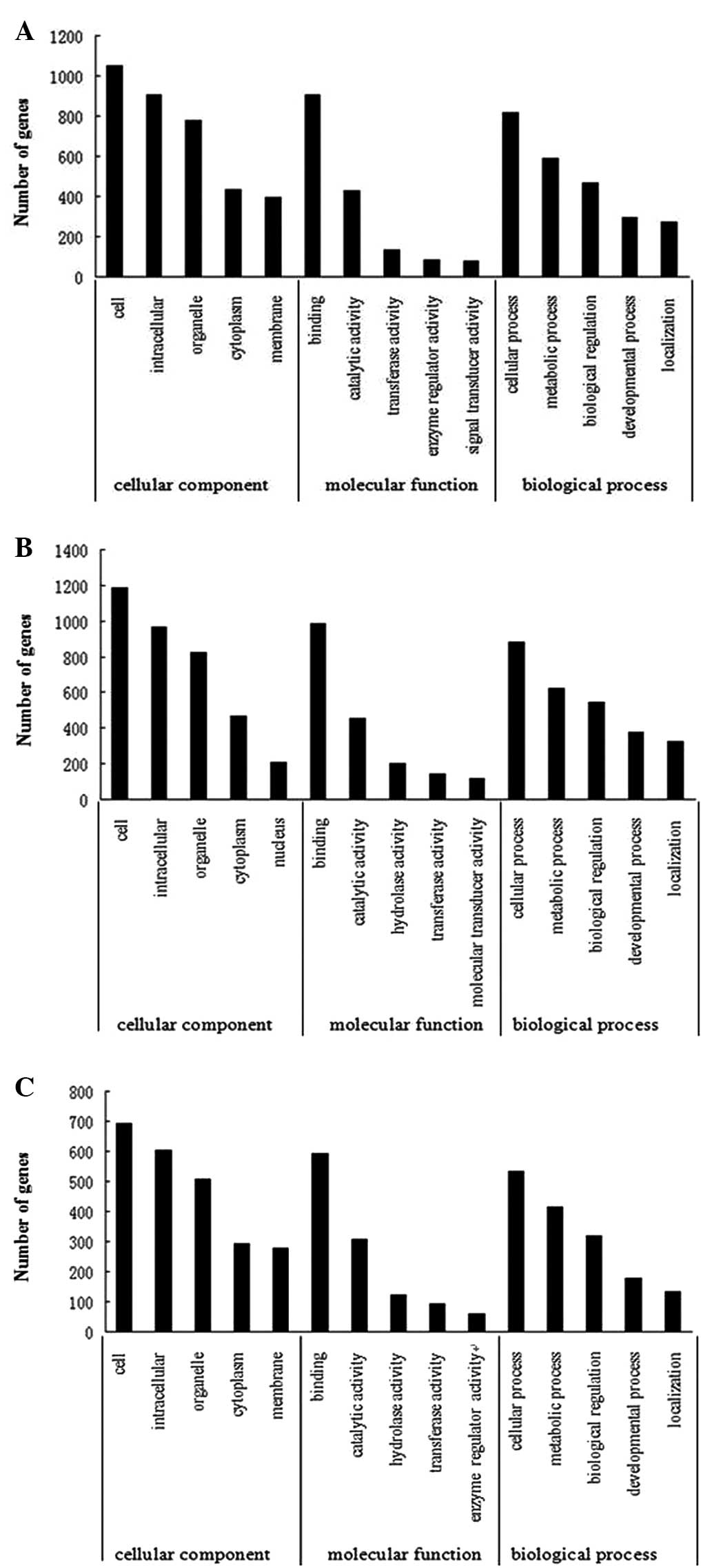Identification of differentially expressed genes involved in transient regeneration of the neonatal C57BL/6J mouse heart by digital gene expression profiling
- Authors:
- Published online on: April 2, 2014 https://doi.org/10.3892/mmr.2014.2109
- Pages: 2111-2116
-
Copyright: © Liu et al. This is an open access article distributed under the terms of Creative Commons Attribution License [CC BY_NC 3.0].
Metrics: Total
Views: 0 (Spandidos Publications: | PMC Statistics: )
Total PDF Downloads: 0 (Spandidos Publications: | PMC Statistics: )
Abstract
Accumulating evidence has revealed that the mammalian heart possesses a measurable capacity for renewal. Neonatal mice retain a regenerative capacity over a short time‑frame (≤6 days), but this capacity is lost by 7 days of age. In the present study, differential gene expression profiling of mouse cardiac tissue was performed to further elucidate the mechanisms underlying this process. The global gene expression patterns of the neonatal C57BL/6J mouse heart were examined at three key time‑points (1, 6 and 7 days old) using digital gene expression analysis. In the distribution of total clean tags, high‑expression tags (>100 copies) were found to be predominant, whereas low expression tags (<5 copies) occupied the majority of distinct tag distributions. In total, 306 differentially expressed genes (DEGs) were detected in cardiac tissue, with the expression levels of 115 genes upregulated and those of 191 genes downregulated in 7‑day‑old mice compared with expression levels in 1- and 6‑day‑old mice, respectively. The expression levels of five DEGs were confirmed using quantitative polymerase chain reaction. Gene ontology analysis revealed a large proportion of DEGs distributed throughout the cell, and these DEGs were associated with binding as well as catalytic, hydrolase, transferase and molecular transducer activities. Furthermore, these genes were involved in cellular, metabolic and developmental processes, as well as biological regulation and signaling pathways. Pathway analysis identified the oxidative phosphorylation pathway to be the process most significantly putatively affected by the differential expression of these genes. These data provide the basis for future analysis of the gene expression patterns that regulate the molecular mechanism of cardiac regeneration.













